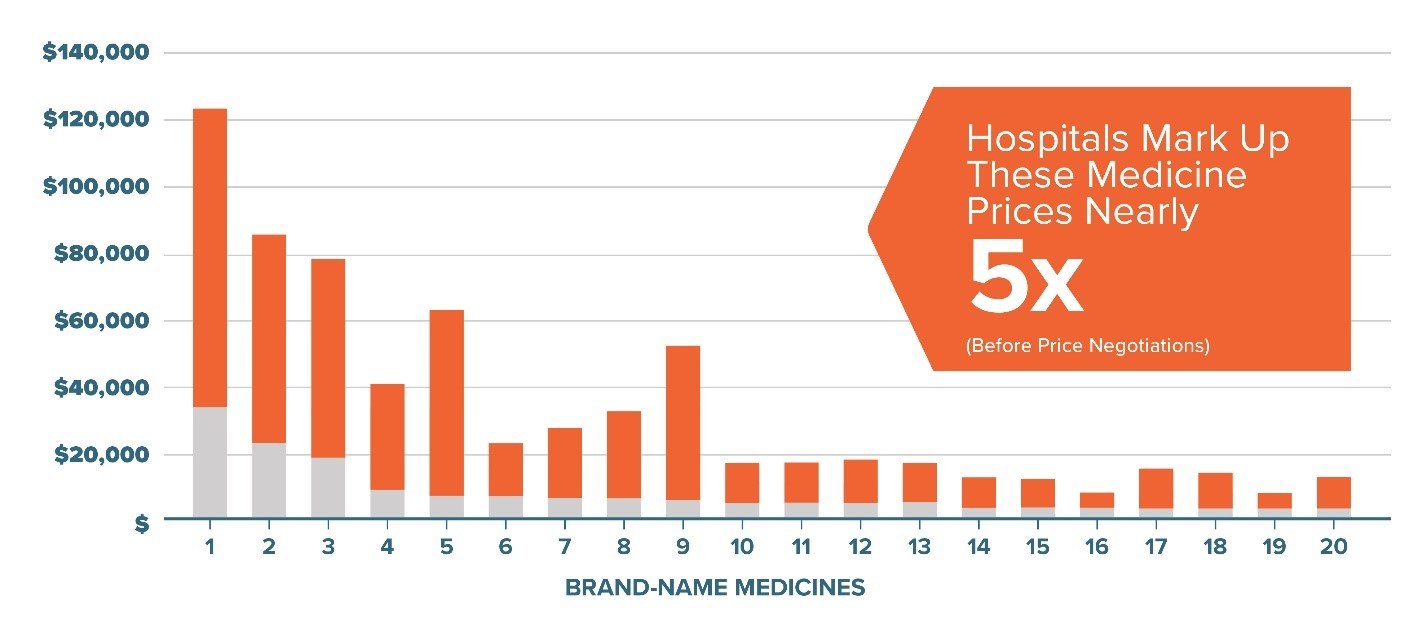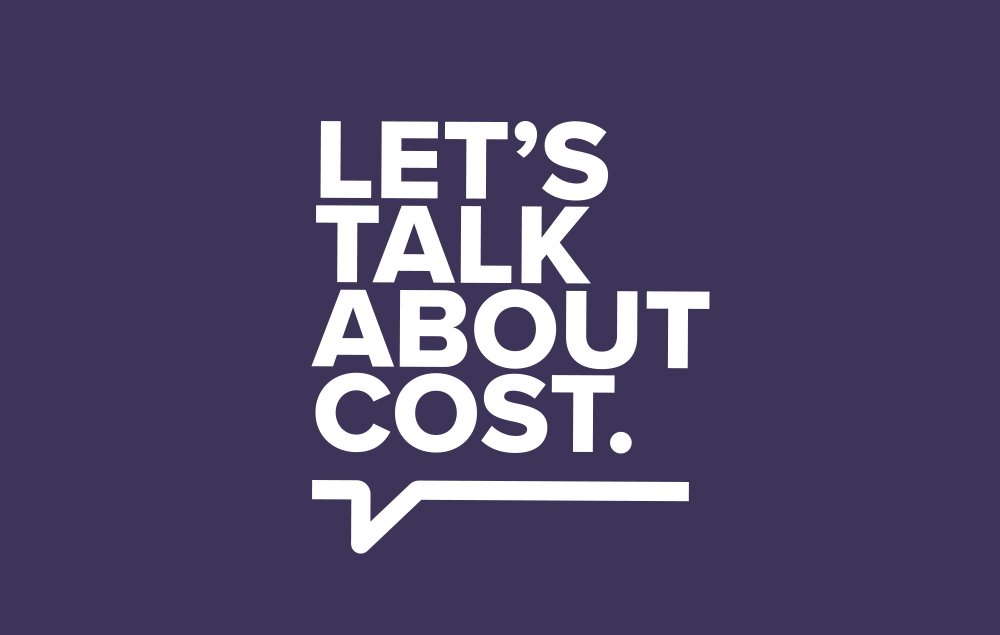A new analysis from the Moran Company found hospitals continue to charge, on average, five times their cost for medicines, driving up cost sharing and premiums for patients across the country. This study, commissioned by PhRMA, builds on a previous study from 2017. Both studies analyzed 20 medicines and found the amount hospitals receive after negotiations with commercial payers is, on average, almost two and half times what they paid to acquire the medicine.

(Gray: Estimated hospital acquisition cost per medicine. Orange: Difference between acquisition cost and estimated hospital charge amount for medicine.)
The 2019 update to the original study also estimated what these markups and margins mean for hospitals that acquire medicines through the 340B drug discount program. The 340B program was designed to ensure access to discounted drugs for vulnerable or uninsured patients through safety-net facilities, but all signs point to 340B hospitals doing the opposite. While hospitals that participate in the program are given a significant discount on medicines, it doesn’t appear that all of them are using the money to help patients as was intended by the program. In fact, their own data show they are providing less and less care to needy patients.
To estimate how much money these 340B hospitals are pocketing from the program off of each medicine, Moran applied a conservative 340B discount to the medicines in their sample.* For example, let’s take a medicine with an Average Sales Price (ASP) of $2,500: 340B hospitals can purchase the medicine from the biopharmaceutical company for an estimated $1,875, mark up the price and, as a result, receive payment from an insurer of $6,000 for administering the medicine. $4,125 is retained by the hospital, meaning Moran estimates these hospitals receive, on average, 3.2 times what the biopharmaceutical company (that researched, developed and brought the medicine to market) receives in payment for the drug.

In addition to recent research showing how hospitals push patients to costlier outpatient settings and highlighting issues with hospital consolidation, this study shines a light on a growing problem in our health care system.
To learn more, visit www.LetsTalkAboutCost.org and PhRMA.org/340B
*25% off a public Medicare Part B drug price known as “Average Sales Price,” (ASP) which reflects an average discount given to all U.S. purchasers (except certain sales) to hospital markups at 340B hospitals. This is a conservative estimate of manufacturer discounts as the average 340B discount can range from 25% to 50% off a medicine’s list price.





